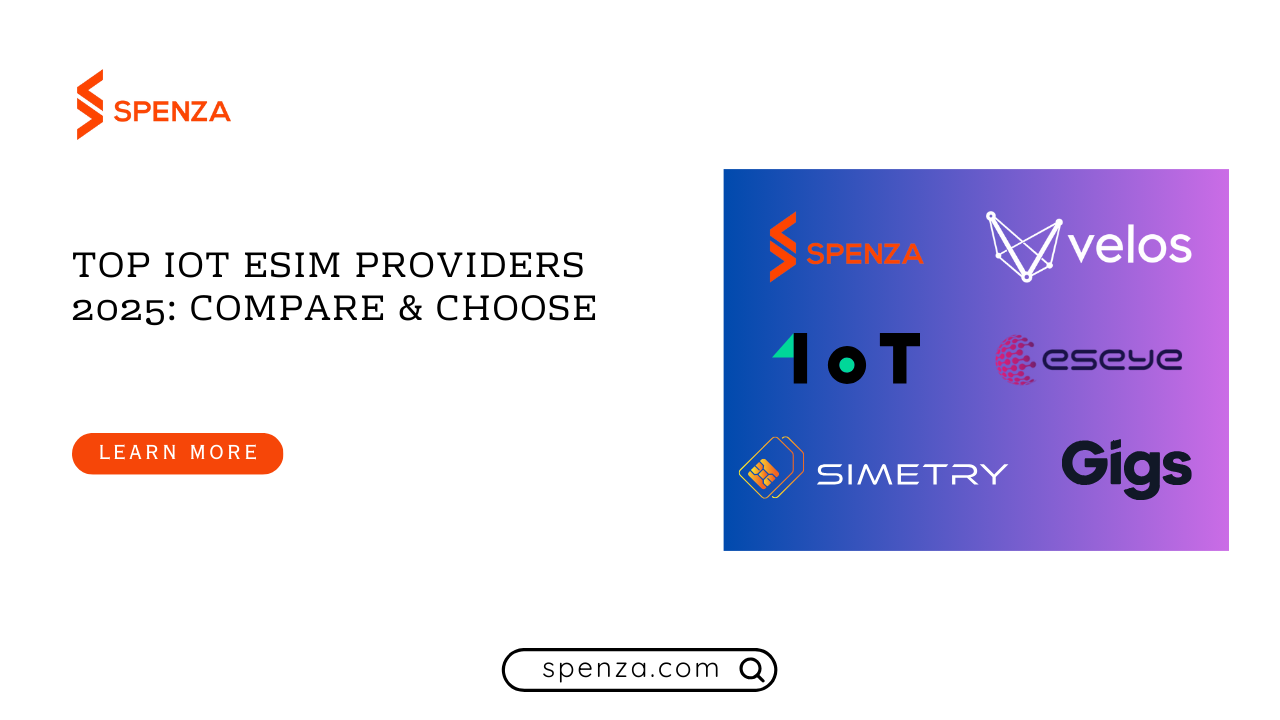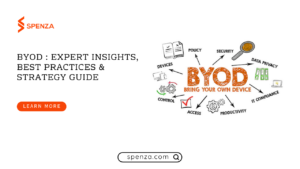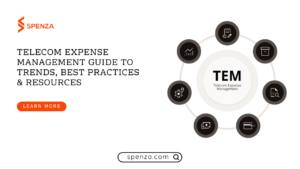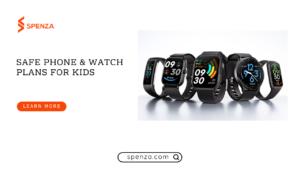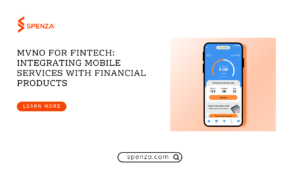Table of Contents
- What Is an IoT eSIM and Why It Matters
- Key Features to Look for in an eSIM Provider
- Top eSIM Providers in 2025: A Comparison
- Spenza
- Eseye
- Gigs
- Simetry
- Velos IoT
- 1oT
- eSIM Provider Comparison Table
- Final Thoughts: Which Provider is Right for You?
- FAQs

Flexible, worldwide, and affordable connection is more important than ever as IoT installations grow quickly. Although they were formerly the norm, eSIM technology is replacing traditional SIM cards because it gives organisations greater control, remote provisioning, and the flexibility to quickly move between networks. It might be difficult to select the best eSIM platform for your company with so many options available. To assist you in making an educated choice, this article evaluates the leading IoT eSIM providers in 2025 based on their features, advantages, and disadvantages.
What Is an IoT eSIM and Why It Matters
An eSIM (embedded SIM) is a programmable SIM card that’s built directly into an IoT device. Instead of physically swapping SIM cards, businesses can activate and switch networks remotely.
As IoT ecosystems grow to include thousands or even millions of connected devices—across countries and often in hard-to-reach places—the operational burdens of managing physical SIM cards become unmanageable. eSIM changes that by offering:
- Zero-touch deployment: Devices can be shipped and activated remotely, reducing time-to-market and manual labor.
- Carrier flexibility: eSIMs can switch between network providers without replacing hardware, eliminating vendor lock-in.
- Seamless international scaling: Devices operating across borders can dynamically switch to local networks, avoiding roaming fees and coverage issues.
- Improved durability: With no physical card slot, devices are more tamper-proof, weather-resistant, and secure—important in rugged environments.
Key Features to Look for in an eSIM Provider
Choosing an eSIM provider is a strategic decision that affects the cost, performance, and success of your entire IoT deployment. Not all providers offer the same depth of features, reliability, or level of control—so it’s important to evaluate based on your specific needs. Below are the core features and criteria that should guide your decision-making process.
1. Global Carrier Coverage
- Why it matters: If your IoT devices operate across regions—or may in the future—you need a provider with access to global carrier networks. Ideally, the platform should allow you to switch to the best-performing network in any country.
- What to look for: Multi-IMSI or eUICC support (enabling multiple profiles on one eSIM), global roaming agreements, and access to Tier 1 carrier networks.
2. Remote SIM Provisioning
- Why it matters: Physical SIM replacement is costly and slow. Remote provisioning allows you to activate, change, or delete profiles over-the-air—critical for devices already in the field.
- What to look for: GSMA-compliant remote SIM provisioning (RSP), centralized control panel, and APIs that support OTA updates.
3. Multi-Network Switching
- Why it matters: Devices often lose connectivity due to signal drops, coverage blackspots, or carrier outages. With multi-network switching, the eSIM can automatically connect to the best available carrier.
- What to look for: Automatic failover, signal strength-based switching, and support for high-availability applications.
4. Real-Time Monitoring & Analytics
- Why it matters: Without visibility, you can’t optimize or troubleshoot your deployment. A good eSIM platform gives you live data on usage, signal strength, latency, and costs.
- What to look for: Dashboards, real-time alerts, usage thresholds, and reporting tools to forecast and analyze usage trends.
5. Security & Compliance
- Why it matters: IoT devices are increasingly being targeted by cyber threats. Your eSIM provider should offer strong security protocols to protect data in transit and at rest.
- What to look for: Encrypted communication, secure key provisioning, profile locking, and compliance with global standards like GDPR, HIPAA, or ISO 27001.
6. Scalability & Lifecycle Management
- Why it matters: As your deployment grows, managing the full lifecycle of each eSIM—from activation to decommissioning—becomes more complex. The right provider will make this process seamless.
- What to look for: Bulk provisioning, automated activation/deactivation, APIs for device onboarding, and full lifecycle visibility.
7. Developer Tools & API Access
- Why it matters: For tech teams building custom platforms or integrating eSIM into their software stack, APIs are essential.
- What to look for: Well-documented APIs, SDKs, webhooks, and sandbox environments for testing.
8. Transparent Pricing & Cost Controls
- Why it matters: Without proper controls, IoT connectivity costs can spiral out of control. Pricing should be predictable, transparent, and easy to monitor.
- What to look for: Pooled data plans, real-time billing insights, usage caps, and automated alerts for anomalies.
9. Customer Support & Onboarding
- Why it matters: Even with a self-serve platform, you’ll need guidance—especially during onboarding or large-scale rollouts. Good support can make the difference between weeks and days.
- What to look for: Dedicated account managers, onboarding assistance, training materials, and fast-response technical support.
Top eSIM Providers in 2025: A Comparison
Spenza
Overview: Spenza is designed to simplify eSIM management for businesses deploying IoT devices at scale. Built around automation and visibility, Spenza offers a centralized dashboard for provisioning, monitoring, and cost optimization.
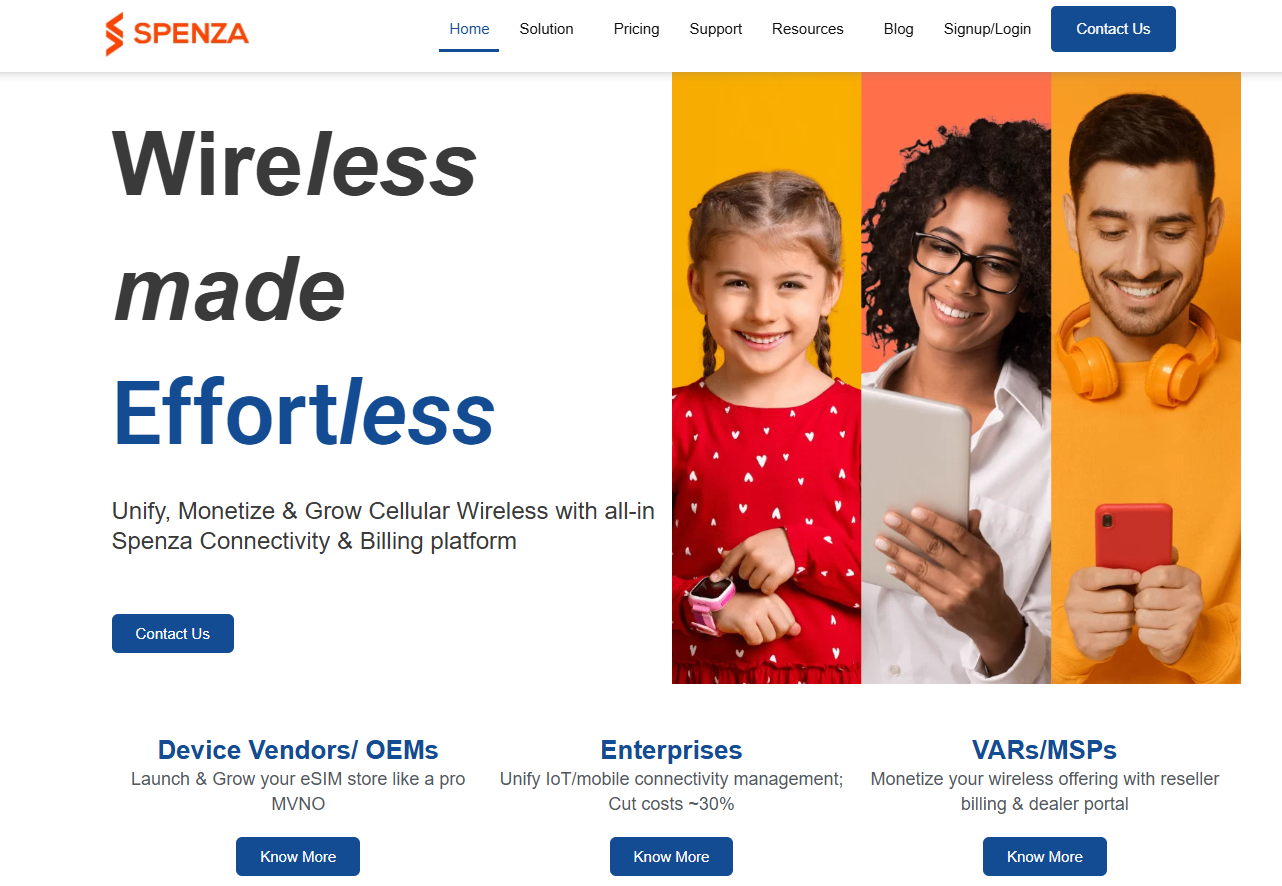
Pros:
- Smart, AI-powered cost controls
- Automated network switching and optimization
- Real-time usage insights and alerts
- Developer-friendly APIs
- Works with multiple eSIM providers and aggregators
Cons:
- Not a carrier itself, so relies on partner networks
- Newer compared to legacy players
Best For: Companies that want full control, cost visibility, and easy global scaling across multiple use cases.
Eseye
Overview: Known for its deep integration with hardware, Eseye offers reliable global IoT connectivity with access to 700+ networks. Its offering is device-centric and often comes embedded into IoT hardware.
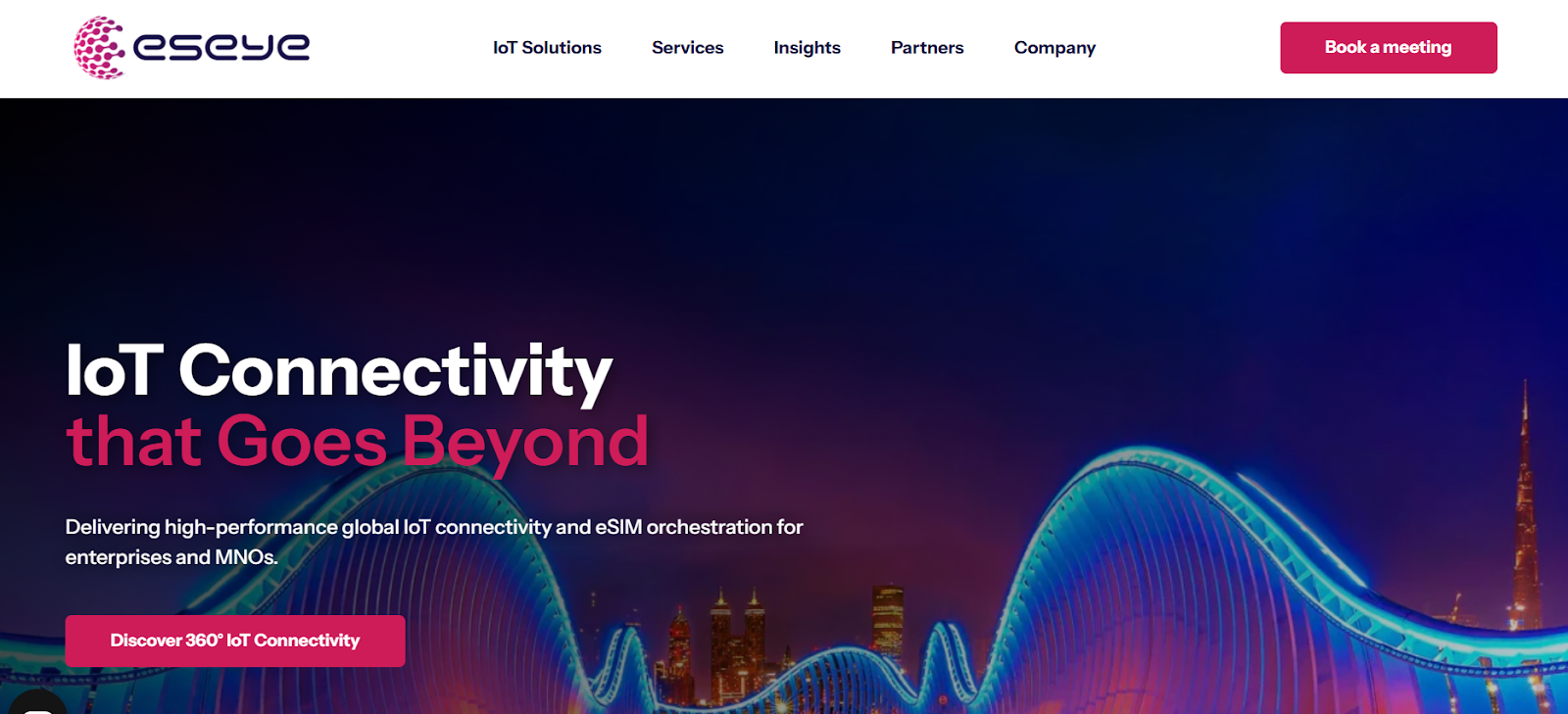
Pros:
- Hardware-integrated SIMs for out-of-box connectivity
- Strong multi-network global coverage
- Excellent reliability in remote and industrial use cases
- Partnerships with AWS and other cloud platforms
Cons:
- Less customizable on the software side
- Pricing may be higher for smaller deployments
Best For: Enterprises needing robust global reach and deep hardware integration.
Gigs
Overview: Gigs offers a developer-first platform to build telecom-like services using APIs. It’s ideal for brands, apps, and companies wanting to embed connectivity into their product ecosystem.
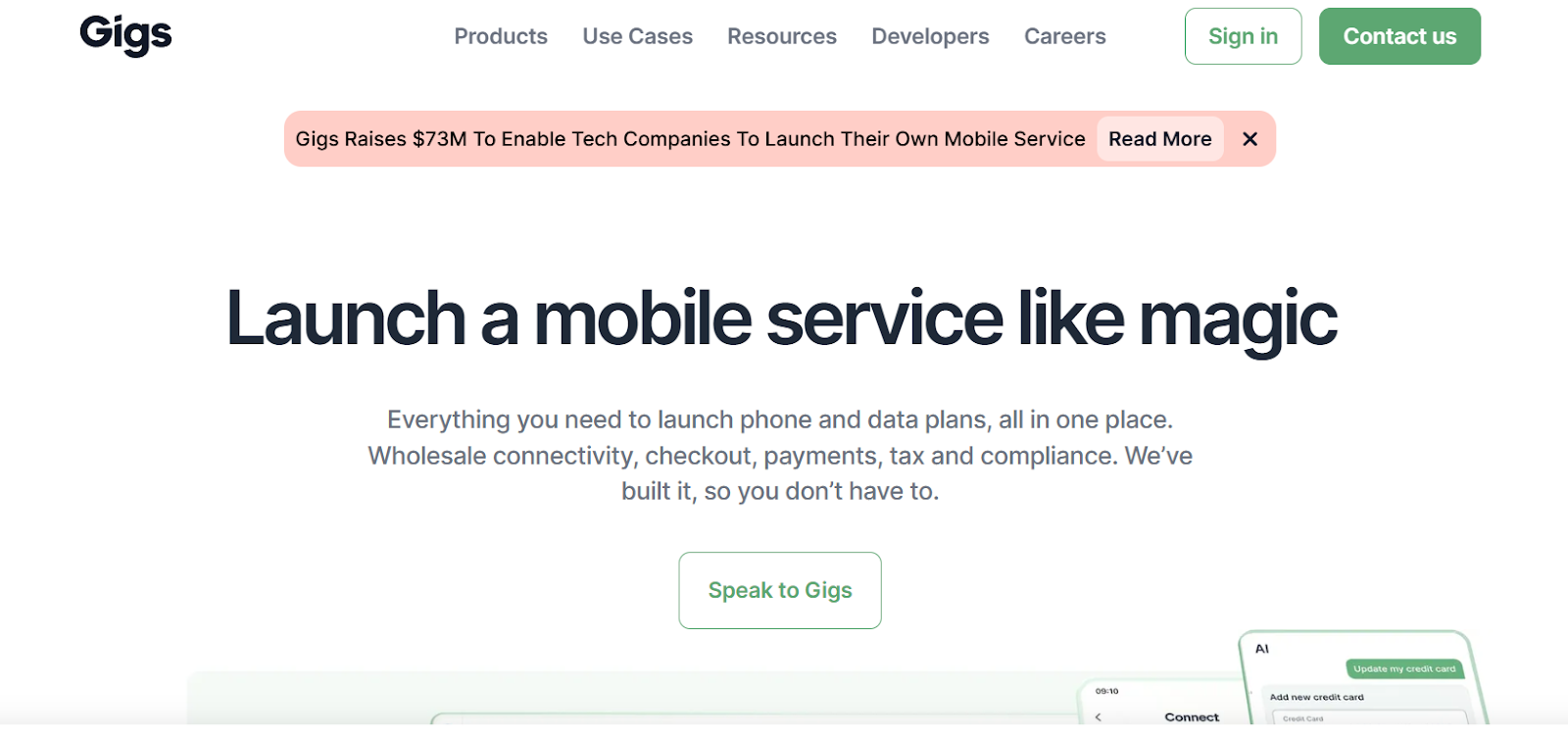
Pros:
- API-first, modern developer tools
- Lets you launch branded data plans
- Great for consumer-facing devices and apps
- Flexible pricing models
Cons:
- More focused on mobile app integration than industrial IoT
- Limited visibility into enterprise-level controls
Best For: Startups or apps looking to offer embedded connectivity services or launch branded MVNOs.
Simetry
Overview: Simetry provides IoT connectivity with a focus on simplicity and data pooling. It supports devices across North America and globally with intuitive dashboards.

Pros:
- Pooled data plans to simplify costs
- Carrier-agnostic model
- Fast deployment and onboarding
- Focus on simplicity and customer service
Cons:
- Limited advanced analytics and automation tools
- Best suited for U.S. and North America-based operations
Best For: SMBs and mid-sized businesses needing a straightforward solution with local support.
Velos IoT
Overview: Velos IoT (formerly JT IoT) is an established player offering global cellular connectivity and SIM lifecycle management for enterprise-grade IoT.
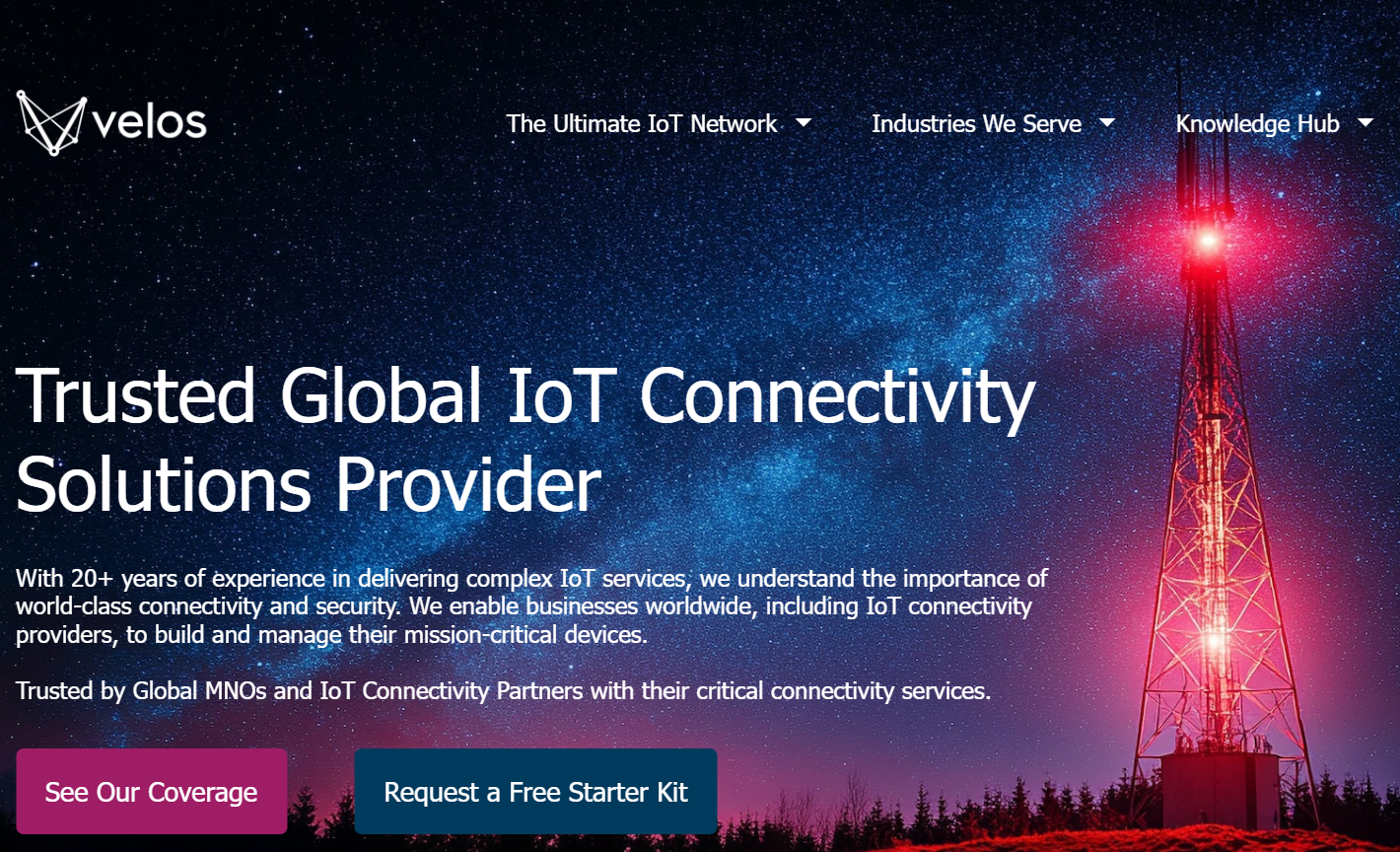
Pros:
- Extensive international carrier agreements
- Advanced SIM lifecycle management
- Enterprise-grade platform tools and APIs
- Dedicated support for complex rollouts
Cons:
- Enterprise pricing may be steep for smaller players
- Not as agile as newer API-first platforms
Best For: Large enterprises with international operations and complex compliance needs.
1oT
Overview: 1oT provides a comprehensive global IoT connectivity solution with eSIM technology, offering seamless coverage in 190+ countries through a unified platform that handles SIM management, telecom switching, and billing in one place.
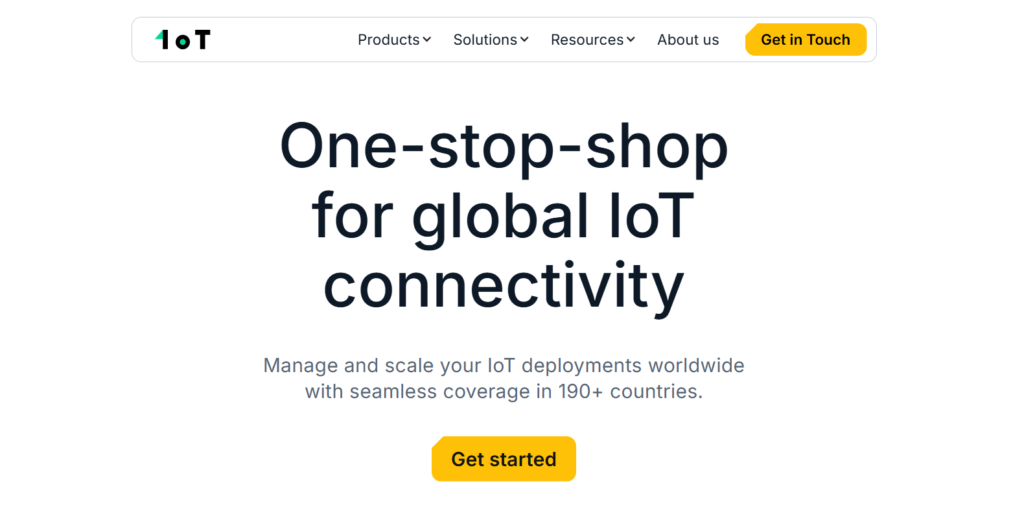
Pros:
- Global reach with coverage in 190+ countries (2G/3G/4G/5G, NB-IoT, LTE-M)
- Over-the-air telecom profile switching capability
- Telecom-agnostic approach partnering with multiple carriers
- Industry-specific solutions for connected cars, fleet management, payment terminals, etc.
Cons:
- Potentially higher costs than using single local telecom providers
- Third-party dependency for critical connectivity management
- Limited transparent pricing information on website
- Potential integration complexity with existing system
- Learning curve for utilizing all platform features
Best For: IoT companies requiring seamless global device connectivity management without the complexity of handling multiple telecom relationships.
eSIM Provider Comparison Table
| Provider | Strengths | Weaknesses | Ideal For |
|---|---|---|---|
| Spenza | Cost control, automation, real-time data | Not a carrier, newer in market | Cost-sensitive, high-scale IoT deployments |
| Eseye | Hardware integration, reliability | Less flexible UI, higher cost | Global industrial and mission-critical IoT |
| Gigs | API-first, embedded data plans | Less suited for industrial IoT | Apps, MVNOs, digital-first brands |
| Simetry | Simple UI, pooled data plans | Limited advanced features | North America-focused SMBs |
| Velos IoT | Global carrier deals, SIM lifecycle | Enterprise-level complexity | Multinational IoT fleets and infrastructure |
| 1oT | Industry-specific solutions | Integration complexity with existing system | IoT companies requiring seamless global device connectivity |
Final Thoughts: Which Provider is Right for You?
The best eSIM provider for your business depends on your goals, technical resources, and deployment scale. Here’s a quick decision guide:
- Choose Spenza if you want smart automation, flexible connectivity, and visibility into your costs without getting locked into one carrier. Ideal for fast-growing businesses managing diverse devices.
- Go with Eseye if reliability, global coverage, and hardware-level integration are mission-critical for your deployments.
- Pick Gigs if you’re building a branded app or platform and want to launch telecom-like services without the telco headaches.
- Select Simetry if you’re based in North America and want a straightforward, customer-friendly connectivity solution.
- Use Velos IoT if you’re rolling out large-scale infrastructure projects or global fleets and need robust carrier relationships and lifecycle management.
- Try 1oT if you want to experience hassle-free global IoT connectivity with a single eSIM solution that lets you deploy devices in 190+ countries.
Ultimately, choosing the right eSIM platform comes down to three core questions:
- How many devices are you connecting, and where?
- What level of control and automation do you need?
- How important are cost, security, and scalability in your current and future plans?
To learn more about how to launch your own MVNO, check out our step-by-step guide: Launching an MVNO with Spenza
Curious about the cost of launching an MVNO? Dive into our breakdown here: MVNO Launch Cost: What You Need to Know
FAQs
A traditional SIM is a removable card tied to a single carrier. An eSIM is embedded into the device and allows remote provisioning, switching carriers, and managing connectivity over the air.
Yes, most eSIM platforms support multi-carrier connectivity, allowing devices to switch between networks based on signal strength, location, or cost.
Yes. eSIMs are generally more secure than physical SIMs because they are tamper-resistant and support secure OTA provisioning and encrypted profiles.
Absolutely. From smartwatches to connected factories, eSIM is designed for a wide range of applications across industries.
Spenza provides an intelligent platform for managing IoT eSIMs across multiple networks. It helps automate provisioning, optimize costs, and give you real-time insights to scale your deployments without the manual hassle.
Want help managing your IoT rollout? Reach out to Spenza and see how easy it can be to scale globally—with control, clarity, and confidence.
